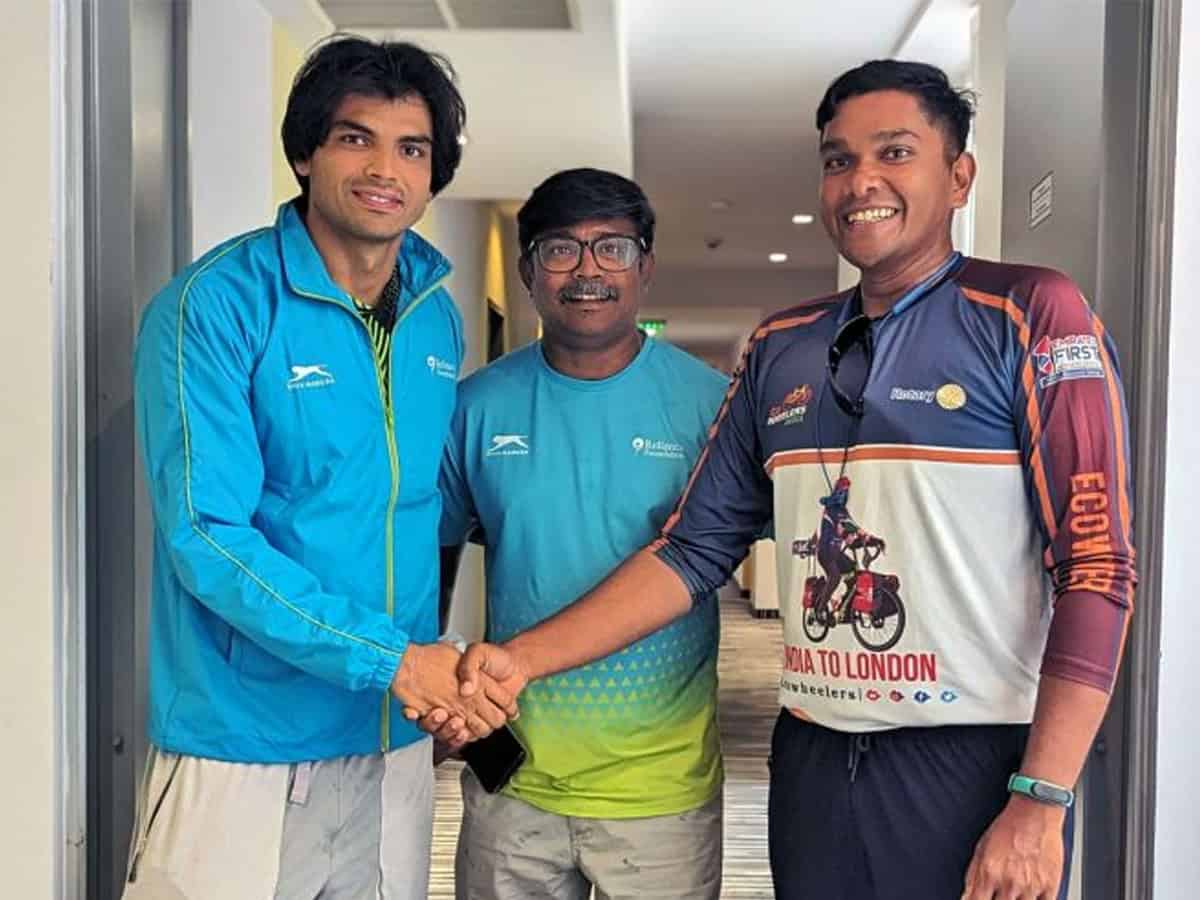
After disappointing performances by many Indian athletes, all eyes are turning expectantly towards our ace javelin thrower Neeraj Chopra. One of his most ardent fans is Fayis Asraf Ali of Kerala. To meet his idol and wish him good luck, Asraf Ali cycled 22,000 km from Kerala to Paris and finally was able to shake hands with Neeraj and wish him the best of luck.
Dressed in a bright yellow jacket and with an Indian flag flying on his cycle, Asraf Ali draws attention wherever he goes in Paris. He tells everyone about life in India and his favourite athlete Neeraj Chopra.
But meeting Neeraj was not the sole purpose of his journey. The Kerala man began his journey long before the Olympics began. Asraf Ali was working as an engineer in Saudi Arabia but gave up his job and returned to his native place when his father fell seriously ill. Despite Asraf Ali’s best efforts, his father passed away leaving him in deep depression. So he decided to undertake some activity that would ease the pain.
He made plans to go on a cycling expedition that would culminate in Paris where he could meet Neeraj and wish him well. That was how it all began. He packed a tent, a sleeping bag and four pairs of clothes on his cycle and started on his long and arduous trip.
The dedication and sacrifices of fans like Asraf Ali are a huge motivating factor for athletes. It is hoped that Asraf Ali’s good wishes will not go in vain and that Neeraj will again win the gold medal at his event.
Indian govt. sends air conditioners
Thanks to global warming, the temperatures in Paris have been rising steadily over the last few years. Summers are unbearably hot. Even Indian players who are accustomed to playing in hot conditions feel the effect. To top it all, there are no air conditioners in the rooms of the players who are staying in the Games village.
Many athletes have left the village and sought out accommodation in nearby hotels. The Indian athletes stayed at the Games village and tried to brave it out.
Indian athletes were slightly luckier than the others. After several of them made their complaints known, the Indian government promptly sent portable air conditioning machines to Paris. These machines reached their destination a few days after the games had begun. But at last the needs of the Indian participants were taken care of and they did not have to suffer from the heat any more.
Super moms of Paris
Among the women athletes who are taking part in the Games, there are several new mothers. Some have brought their babies with them while others have left the little ones at home with their families. But the case of Egypt’s fencer Nada Hafez was different from all the rest.
Taking part in the sabre competition, Nada defeated Elizabeth Tartakovsky of the USA in the first round. But in the second round, she lost to Jeon Hayoung of Korea. After the defeat, she made a startling confession that she had not revealed to the organisers earlier because she was afraid they would not allow her to participate. After losing she felt that her closely guarded secret could be revealed.
“I am seven months pregnant,” said the 26-year-old Nada. “You all saw two fencers competing against each other but now I can tell you that there were three people who were involved in the sabre fencing event. My yet-to-be-born baby and I faced many challenges but it was worth it. I am proud that we both won one bout,” she added.
Who was Roland Garros?
Tennis superstar Novak Djokovic won the gold medal after defeating the young Carlos Alcaraz in the men’s singles final at the world-famous Roland Garros courts which has been the venue of French Open tennis tournaments for many decades.
But who is the man after whom the stadium has been named? Many tennis fans know of the ground but do not know the background of the man after whom it is named.
Roland Garros was a French aviation enthusiast and also a fighter pilot who fought for France in the First World War. In the course of the war, he was captured by the German army and spent three years as a prisoner of war.
But he later escaped, rejoined the French Air Force and was again involved in aerial battles against German pilots. On 5 October 1918, his aircraft was shot down and he died in the crash just one day before his 30th birthday. The famous tennis stadium in Paris has been named after him.



